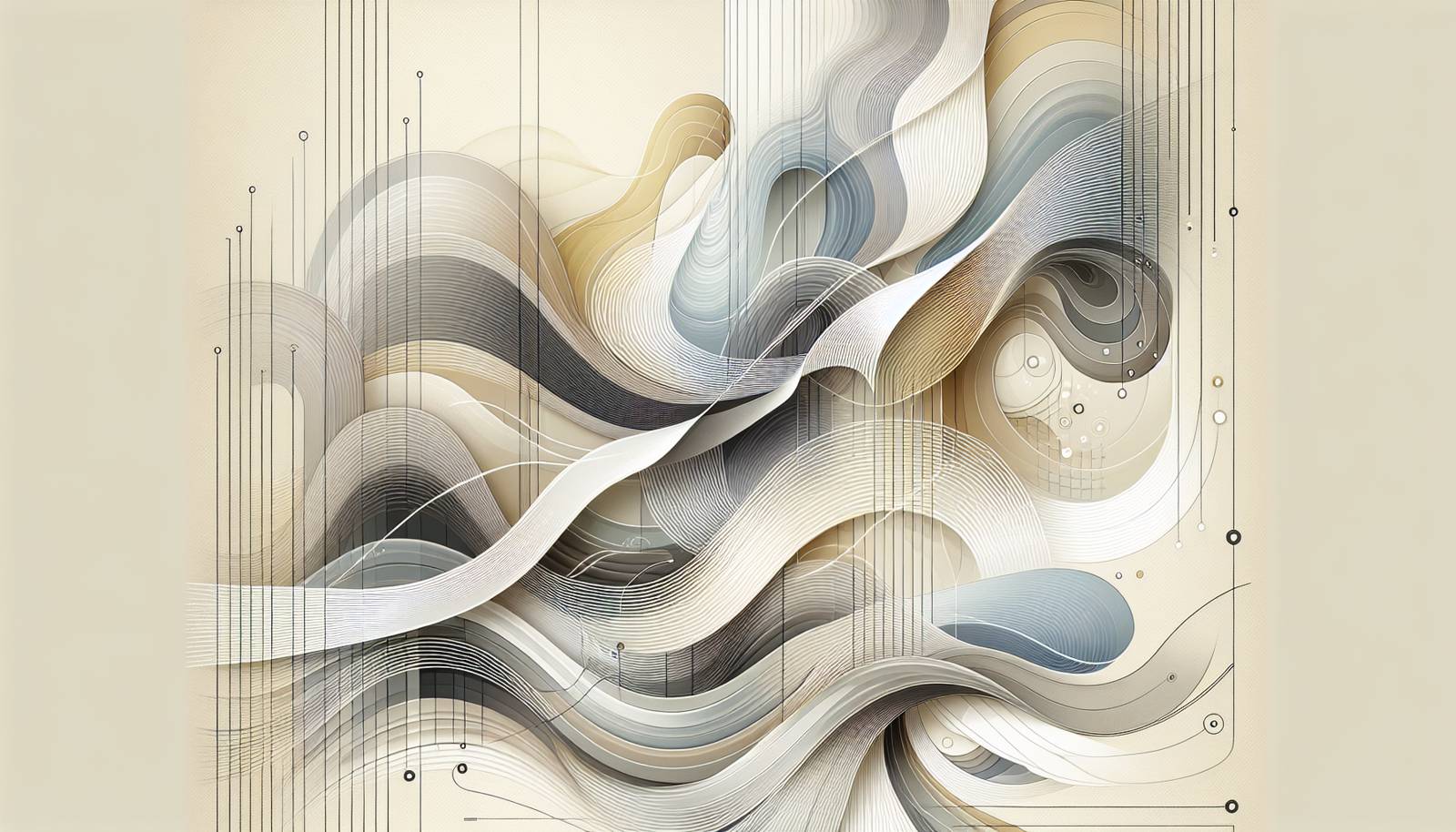
FAQ About The Cultural Role of Album Covers in Music History

What is the cultural significance of album covers in music history?
Album covers hold a significant cultural role in music history as they serve as visual representations of the music and the artist's identity. They often reflect the cultural trends and social issues of the time, making them an important part of the historical documentation of an era's aesthetic and cultural movements. Album covers can influence public perception, fashion trends, and even political movements, acting as powerful tools for cultural expression and commentary.

How have album covers evolved over the decades?
Album covers have evolved significantly since their inception in the mid-20th century. Initially, they were simple and functional, meant primarily to protect the vinyl records. However, in the 1960s and 70s, they became more artistic and experimental, reflecting the psychedelic and counterculture movements. The 1980s saw the rise of digital graphics, and in recent decades, album artwork has become a part of digital branding strategies, designed to be shared on social media and viewed on streaming platforms rather than just physical records.

Who are some iconic album cover artists?
Several album cover artists have left an indelible mark on music history. Reid Miles is renowned for his work with the Blue Note jazz label, creating minimalist and stylish designs. Peter Blake and Jann Haworth created the iconic cover for the Beatles' Sgt. Pepper's Lonely Hearts Club Band. Hipgnosis, including Storm Thorgerson and Aubrey Powell, produced surreal and innovative covers for Pink Floyd, Led Zeppelin, and more. Andy Warhol's pop art contributions to covers like the Velvet Underground's debut album and the Rolling Stones' Sticky Fingers are also seminal examples.

How do album covers influence fashion and design?
Album covers have a significant impact on fashion and design by serving as cultural artefacts that capture and convey the aesthetic trends of their time. They often inspire fashion designers and artists, who draw upon their imagery, themes, and color palettes. For instance, the punk aesthetics of album covers from bands like the Sex Pistols or The Clash have influenced streetwear and mainstream fashion. Similarly, the art nouveau influences visible in 1960s psychedelic rock covers have repeatedly resurfaced in various design fields.

What role do album covers play in an artist's brand identity?
Album covers are crucial to an artist's brand identity as they provide a visual translation of the artist's music and message. Cover art communicates the tone, style, and theme of an album, making it integral to the listener's first impression. A striking and memorable album cover can elevate an artist's visibility and enhance their connection with fans. It is often used across various media as a consistent visual identifier, helping to establish and maintain the artist’s overall aesthetic and brand.

How did the album cover design impact the success of an album?
Album cover design can significantly impact the success of an album by attracting attention, creating intrigue, and providing visual allure that complements the musical content. An iconic cover can help an album stand out among others, becoming a part of the listener's cultural consciousness. For example, the stark, minimalist design of The Beatles' "White Album" or the visually striking cover of Nirvana's "Nevermind" contributed to the albums' iconic status and helped in reinforcing their place in music history.

What are some examples of album covers that became cultural symbols?
Several album covers have transcended into cultural symbols. The Beatles' Sgt. Pepper's Lonely Hearts Club Band, with its colorful and whimsical design, is considered a symbol of 1960s counterculture. Pink Floyd's The Dark Side of the Moon, with its iconic prism design, represents the progressive rock era. Nirvana's Nevermind, with the image of a baby swimming towards a dollar bill, reflects themes of innocence and capitalism. These covers have left lasting impacts, widely recognized even beyond the music industry.

How do cultural movements reflect in album cover art?
Cultural movements often reflect in album cover art by incorporating the themes, aesthetics, and ideologies of the time. In the 1960s, psychedelic rock covers used vibrant colors and surreal imagery reflective of the psychedelic movement. The punk movement of the 1970s and 80s utilized raw, gritty, and DIY-inspired designs to express rebellion. More recently, hip-hop covers have incorporated urban street art and political symbolism, mirroring social movements and the cultural milieu they originate from.

What is the impact of digital platforms on album cover art?
The rise of digital platforms has transformed album cover art from a physical to a largely digital medium. The importance of cover art has not diminished; however, its dimensions and design have adapted to digital viewing on smartphones and computers. Digital distribution allows for dynamic and interactive artwork not possible with physical media, such as animated graphics or augmented reality elements that enhance the listener's experience while maintaining the visual storytelling aspect of traditional album covers.

How do artists choose album cover designs?
Choosing an album cover design often involves collaboration between the artist, designers, and sometimes the record label. Artists typically want their cover to reflect the music's mood, themes, or personal brand. This might involve commissioning a renowned artist, photographer, or a design agency. Some artists actively participate in the creative process to ensure the artwork aligns with their vision, while others rely on professionals to interpret their music through visual art, balancing artistic expression with marketing considerations.

What are the characteristics of effective album cover art?
Effective album cover art is often visually striking, memorable, and relevant to the music it represents. It captures the album's essence and communicates the artist's vision, drawing potential listeners' attention. Characteristics include strong visual composition, unique or innovative design elements, and the ability to evoke emotions or curiosity. Additionally, it should be versatile enough for use across various media formats, maintaining impact in both physical and digital viewing contexts.

How have artists used album covers to convey political messages?
Artists have long used album covers as mediums for political expression by embedding symbolic elements, provocative imagery, or controversial themes that invite discourse. For example, Rage Against the Machine's self-titled album features the famous photo of a monk self-immolating, symbolizing protest against oppression. Public Enemy's album covers often include strong political imagery reflective of their social justice stance. These covers serve to amplify the artist's message and engage listeners beyond the music itself.

What technological advancements have influenced album cover art?
Technological advancements have significantly influenced album cover art, particularly in terms of production techniques and distribution. The introduction of digital imaging software in the 1980s and 1990s allowed for more complex and layered designs, leading to intricate and polished artwork. The Internet and social media have changed how covers are shared and viewed, often requiring designs to be effective in small, digital formats. More recently, technologies such as 3D modelling and augmented reality have introduced interactive and immersive album cover experiences.

How do album covers contribute to storytelling in music?
Album covers contribute to storytelling in music by providing a visual context that can enhance the listener's experience of the album's narrative or thematic elements. A well-designed cover can set the tone before a single note is heard, offering insights into the album's subject matter or artist's intent. Covers can relate to the album lyrics or conceptually represent the story being told, creating an inviting entry point and deepening the listener’s engagement with the music beyond auditory means.

Can album covers be considered a form of art?
Yes, album covers are widely regarded as a form of artistic expression. They combine elements of visual art, graphic design, and marketing, creating unique artworks that resonate culturally and artistically. Album covers often hold aesthetic value, are collected as art pieces, and are featured in exhibitions. They showcase the artistic collaboration between musicians and visual artists, highlighting creativity and innovation in transforming music into a visual experience.

What are some common misconceptions about album covers?
One common misconception is that album covers are solely marketing tools rather than an artistic form. While album covers do have a promotional aspect, many are created with significant artistic intent and collaboration, contributing to the cultural and aesthetic discourse. Another misconception is that the digital era diminishes the importance of album covers, whereas in reality, they remain crucial for digital music branding, offering new creative possibilities through technology.

How have album covers interacted with fashion trends?
Album covers and fashion have had a reciprocal influence, with covers often setting or reinforcing fashion trends. Musicians frequently emerge as style icons, and their album aesthetics, which include fashion style and imagery, can drive trends. For instance, David Bowie's distinct looks on album covers helped popularize glam rock fashion. More recently, hip-hop and rap artists use album covers to showcase their sense of style, blending music and fashion into a unified cultural statement.

What role did album covers play in the vinyl resurgence?
The resurgence of vinyl has also revived appreciation for album cover art, as listeners seek tangible, high-quality music experiences that digital streaming cannot provide. The large format of vinyl LPs is particularly conducive to detailed and immersive cover designs. Collectors often cite album artwork as a key factor in their preference for vinyl, valuing the tactile and visual engagement. This revival has encouraged new artistry in album cover design, blending traditional and contemporary aesthetics.

How has the role of album covers changed with music streaming services?
With the rise of music streaming services, the role of album covers has shifted from a physical object to a digital thumbnail, impacting their design. While streaming platforms lack the tactile engagement of physical albums, cover art remains essential for branding and differentiating artists. Designing for smaller screens demands clear, impactful visuals that convey the album's identity concisely. Some artists leverage dynamic and multimedia elements in digital album covers to capture attention in the crowded streaming environment.

How do album covers influence an artist's legacy?
Album covers influence an artist's legacy by becoming a recognizable part of their brand and a definitive representation of their musical era. Iconic album covers can enhance an artist's cultural impact and ensure long-term relevance, often being cited in art history and popular culture discussions. They become visual shorthand for the music and the emotions it evokes, establishing a lasting connection with audiences across generations.
